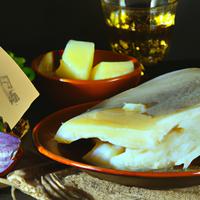
1 serving (100 grams) contains 90 calories, 19.9 grams of protein, 0.7 grams of fat, and 0.0 grams of carbohydrates.

Log this food in SnapCalorie

Nutrition Information
Calories |
214.3 | ||
|---|---|---|---|
% Daily Value* |
|||
| Total Fat | 1.7 g | 2% | |
| Saturated Fat | 0.2 g | 1% | |
| Polyunsaturated Fat | 0 g | ||
| Cholesterol | 135.7 mg | 45% | |
| Sodium | 161.9 mg | 7% | |
| Total Carbohydrates | 0 g | 0% | |
| Dietary Fiber | 0 g | 0% | |
| Sugars | 0 g | ||
| protein | 47.4 g | 94% | |
| Vitamin D | 285.7 mcg | 1428% | |
| Calcium | 26.2 mg | 2% | |
| Iron | 0.5 mg | 2% | |
| Potassium | 681.0 mg | 14% | |
* Percent Daily Values are based on a 2,000 calorie diet. Your daily values may be higher or lower depending on your calorie needs.
Food Attributes
Source of Calories
About Fresh haddock
Fresh haddock is a lean white fish popular in North Atlantic cuisine, known for its mild flavor and delicate texture. Commonly used in dishes like British fish and chips or New England chowders, haddock is versatile and adapts well to grilling, baking, or frying. Nutritionally, haddock is an excellent source of high-quality protein, essential for muscle repair and overall growth. It's also rich in vitamins B6 and B12, which support energy metabolism and nervous system health, as well as selenium, an antioxidant that boosts immune function. Low in calories and fat, fresh haddock is heart-healthy and compatible with most diets. However, frying it in oil or pairing it with heavy, creamy sauces can add unnecessary fats and calories. Opt for lighter preparation methods such as steaming or baking to retain its health benefits while enjoying its natural, subtle flavor.



